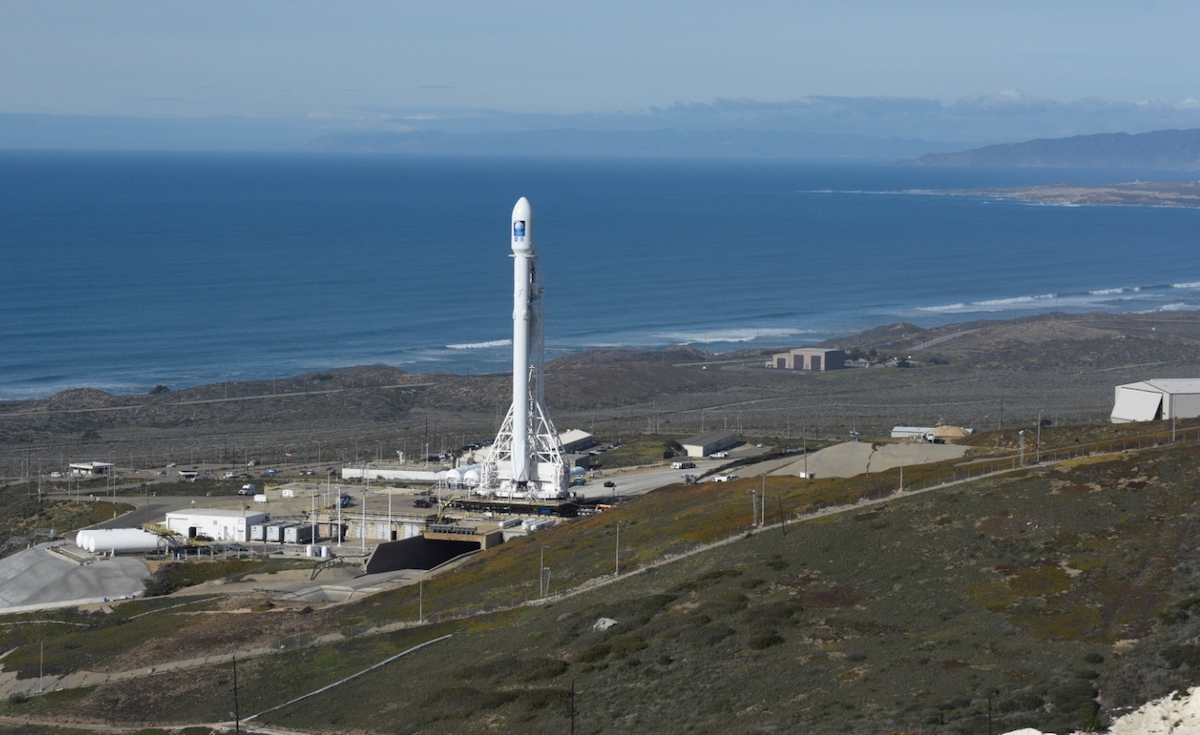Poodle: Asteroid Buster Launched from Vandenberg Space Base
Buck Rogers Plan Relies on 900,000-Mile-an-Hour Fast Ball

Don’t Look Up: Finally — at long last — we’re celebrating a Michael Crichton Christmas. For those tuning in late, Crichton specialized in cranking out fast-paced sci-fi-techno thrillers that all but read themselves. In his books, Man’s wannabe Godlike hubris was always getting rewarded with a heavy dose of karmic comeuppance.
I say “finally,” because almost all of the 200 million Crichton books sold over the course of his prolific lifetime — Andromeda Strain, Coma, Prey, and all the Jurassic Park tomes from which that interminable film series derives — were first purchased as Christmas gifts.
It’s been widely noted that the name of the most recent COVID strain to cast a pall of uncertainty over the planet — Omicron — is something straight out of Crichton. Except, of course, he would have gotten it right — the way Joe Biden, in fact, already has — by dubbing it “Omnicron” instead.
In the Crichton world, you aren’t paranoid; everything is out to get us.
Sadly, it turned out, Crichton lacked the courage of his own catastrophism. Before kicking the bucket, Crichton — who was quick to remind people he attended Harvard Medical School — would deny both climate change and second-hand smoke. If he’d ever bought property in Santa Barbara — say, a sprawling compound by Padaro Lane — he’d find himself, compelled by forces in which he didn’t believe, to protect himself from the inconvenient intrusion of sea-level rise, not to mention the galloping ghost of massive wildfires and deadly debris flows.
Given all the things going bump in our collective good night right now — school shootings, our national homicide spike, an even more massive wave of drug overdoses — maybe a Michael Crichton nightmare fantasy qualifies as the cozy comfort we all need. It’s worth noting that last week’s Omicron Alert — fire drill fatigue, anyone? — is being greeted with the same sense of irritated irrelevance as home smoke detectors that go off for no good reason. Less than 25 percent of us are reportedly taking it seriously.
In a similar freak-out-overload vein, just two days before last week’s ominously named Black Friday, Vandenberg Space Force Base announced the successful launch of a SpaceX Falcon 9 rocket designed to keep asteroids from hitting earth. The launch — Double Asteroid Redirection Test (or DART to its friends) — we are told was a great success. In about 10 months, the spacecraft it carried will crash into an asteroid about 525 feet wide and the height of the Washington Monument that’s now peacefully orbiting another bigger asteroid located 6.8 million miles away.
Sign Up to get Nick Welsh’s award-winning column, The Angry Poodle delivered straight to your inbox on Saturday mornings.
It turns out, 80-100 tons of space material — mostly dust — falls on Earth every day. No known asteroids big enough to cause damage are currently scheduled to penetrate our atmosphere in the next 100 years. Nevertheless, scientists at NASA and Johns Hopkins — who are leading the charge here — have been paid millions of dollars a year to worry about and scan the skies for the ones we haven’t discovered.
Once every 100 years or so, the remnants of some asteroid blow up in the atmosphere over Siberia. (In 1954, a meteorite did crash through the roof of Ann Hodges’s home in Sylacauga, Alabama, striking her hip. Hodges, being an American, did not need medical treatment and became an instant celebrity for a few moments.) Then, in February 2013, an explosion about 20 miles above Earth caused enough windows to shatter that a shower of glass shards sent 1,200 Siberians fleeing to their nearest hospital for treatment.
Where is Michael Crichton when you need him?
The plan is for this little DART spacecraft — which can achieve speeds of 15,000 miles an hour — to collide into the targeted mini-asteroid, delivering the energy equivalent of a baseball thrown at 900,000 miles an hour. The force is expected to shave 73 seconds off the 11 hours and 55 minutes it now takes the asteroid to circle its larger partner. Going along for the ride is another craft from which intergalactic selfies will be taken, displaying the moments of contact and documenting any evidence of orbital disruption. The thinking is that by altering an asteroid’s trajectory just a little, we can avoid collisions with Earth that, we are told, wiped out the dinosaurs 66 million years ago.
Last week’s flight — so loud and rumbly that more than a few people mistook it for an earthquake — cost about $324.5 million. About $70 million of that went to Elon Musk, whose privately owned SpaceX promises to add Xenon thrusters to Vandenberg’s new space-is-the-place economic development plan. This will make it even more lucrative — perhaps —than the county’s recently legalized cannabis industry.
The good news is that no one is talking about launching a prophylactic nuke — or six — at incoming asteroids, as was the tentative thinking not long ago. There’s some talk of attaching “a tractor” to the back side of errant asteroids to put a hitch in its giddy-up and go. That technology’s not here yet, and the costs are said to be prohibitive.
Some skeptics worry this is the camel’s nose under the tent for subliminal long-range plans to colonize Mars. Others argue that if successful, DART could function as the Hoover vacuum needed to eradicate the mountain ranges of space junk we’ve littered the cosmos with. All that clutter, they warn, threaten to destroy the GPS satellites without which we will all have to learn how to read maps again.
And that’s a Michael Crichton nightmare too frightening to even imagine.
Support the Santa Barbara Independent through a long-term or a single contribution.



